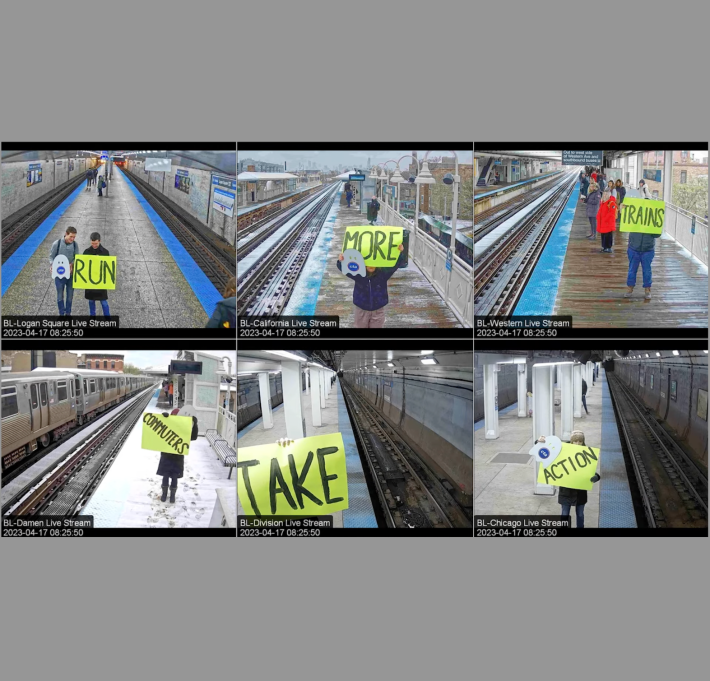
It's no coincidence that the most dangerous streets in many communities are the ones in front of big box stores.
As a rule, big boxes generate a lot of motor vehicle traffic -- and they tend to be a nightmare to navigate without a car. Even though the industry is shifting and some mega retailers have started to create smaller, more urban stores, big boxes likely aren't going away soon. Is it possible to salvage the streets and parking lots around big boxes to make them more walkable for the people who shop and work at these stores every day?
To find out, I interviewed June Williamson about how communities can make better use of big box sites. Williamson is an architect and co-author, with Ellen Dunham-Jones, of Retrofitting Suburbia. Here are her tips...
Make sure you have sidewalks and crosswalks
This really is the most basic starting point. There should be sidewalks and crosswalks, and they should be continuous and navigable.
One step further, Williamson said, is to eliminate "slip lanes" that allow drivers to bypass intersections when making right turns. Those can be dangerous and hard to navigate on foot. A simple right turn lane will suffice instead.
Create a path through the parking lot

Once someone has arrived at a store, they need to navigate a large, potentially dangerous parking lot. A path for walkers is critical.
A path can be created using materials as basic as a mixture of epoxy, paint, and sand -- the basic ingredients of New York City's pedestrian plazas -- if need be. Williamson recommends a strip of solid color. "I like green," she said.
Just make sure the paths are shoveled in the winter.
Make sure there's bike parking
Cover a parking space with the same epoxy-and-gravel mix, add bike racks, and voila!
Create some outdoor public spaces and seating
"Cut out bits of asphalt," says Williamson. "That then could become a little garden seating area, or you could add a drainage swale."
These spaces can give employees a nicer place to spend their breaks, or give patrons of indoor cafes the option of sitting outside.
Make transit stops comfortable
A bench and a trash can, at minimum, "are things a community can require a big box developer to provide," says Williamson.
"A lot of the staff is arriving by transit," she said. "They’re the ones coming by bikes or buses. The people that cross the arterial roads and are waiting 10 minutes for the light to cross, they’re wearing their uniforms because they work at the McDonalds or the Starbucks."
Create more access points for people on foot

In many cases, zoning limits big box stores to one street entrance. But you'll often see paths, known as desire lines, worn by people who take another route by foot. Among other things, these paths are opportunities to cut down on car traffic to the store.
"Sometimes people make these cut throughs in the dirt," said Williamson. "Can those be made more purposeful?" If the unofficial paths get built out with better materials, more people will walk and fewer will drive.
When turning a desire line into a paved path, Williamson adds, it's important to make sure it has proper lighting as well.
Get smarter about parking
Retailers will often demand large parking lots to hold all the customers they project on the busiest days of the year. Smart communities will resist this impulse, says Williamson.
Rather than rely on rote formulas to determine how many parking spots to build, a customized study can help reduce how much parking gets built, she says. Even better is to get retailers to pool parking spaces, so that each doesn't maintain a day-after-Thanksgiving-size supply.
"They don’t want spillover parking," she said, meaning it's frowned upon for customers to park in a lot that "belongs" to a different store than the one they shop in. "That has to change. If you have an enlightened planner, they can look at all this parking as a shared resource and a driver can park once and a driver can visit multiple stores at different centers."
Use "liners" to create a more walkable streetscape

Increasingly, big box sites are designed with smaller, street-facing retail stores on the periphery. These "liner" businesses, as they're called in the industry, conceal the enormous parking lot from street level. It's a cosmetic change that nevertheless can make walking in the big box environment less intimidating.



